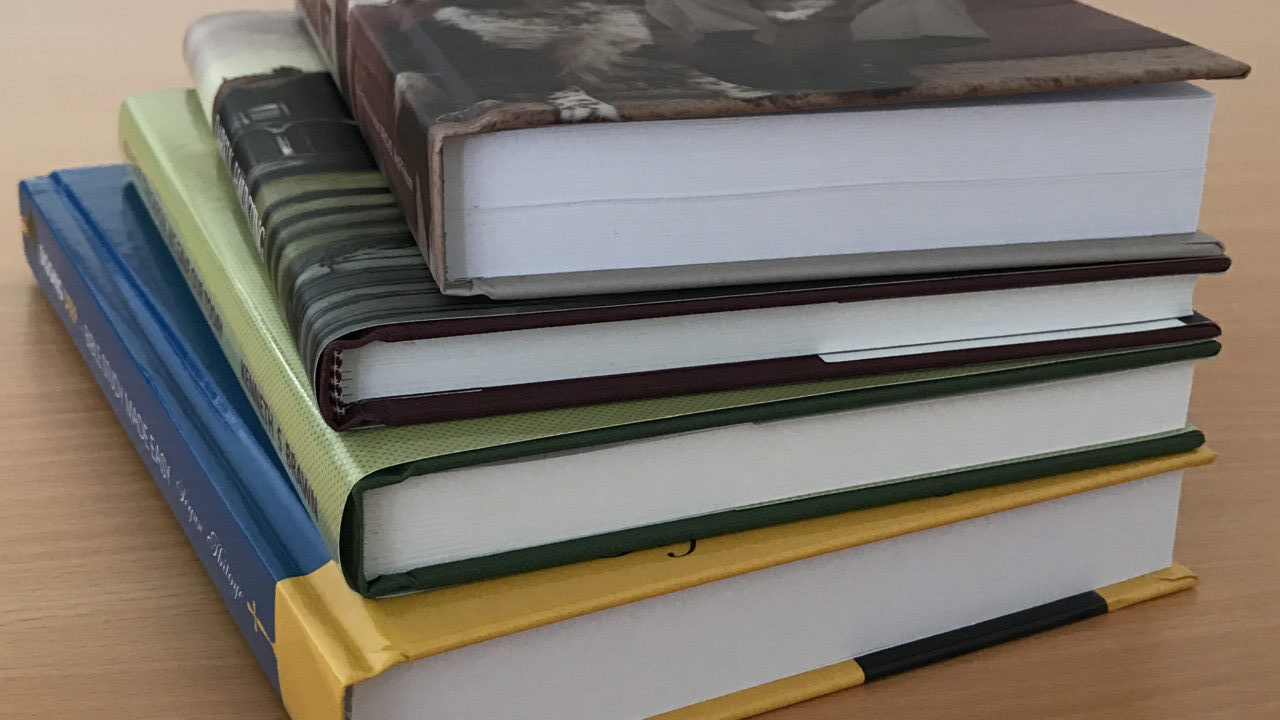Hardcover Books with the Best Reader Ratings
Hardcover Books with the Best Reader Ratings
Blog Article
A Comprehensive Overview to the Process of Hardcover Books Printing
When you commence the trip of hardbound book printing, understanding the entire procedure is necessary. As you navigate through binding and quality control, you'll locate that every decision affects the book's overall appeal.
Recognizing the Hardbound Publication Framework
When you explore the globe of hardbound books, you'll rapidly discover that their framework is willful and distinctive. The external case, commonly made from strong cardboard, supplies longevity and security. You'll locate a material or natural leather treatment, which not only improves aesthetics however also contributes to guide's durability. Inside, the endpapers connect the cover to the text block, ensuring a smooth interchange.
The message block itself is composed of multiple signatures, or folded up sheets, sewn with each other for stamina. You'll see that the spinal column is enhanced, permitting a smooth lay-flat reading experience - hardcover books. In addition, the book's weight typically conveys a feeling of quality and durability
Hardcover books commonly feature a dirt jacket, which serves as an advertising device while protecting the cover. Recognizing these aspects assists you appreciate the craftsmanship behind hardbound publications and their one-of-a-kind allure in the literary globe.
Manuscript Prep Work and Editing And Enhancing
Obtaining your manuscript ready for printing is important, and it starts with appropriate formatting guidelines. You'll need to understand the editing process to improve your job and assure it reverberates with viewers. And also, grasping proofreading methods can help you catch those annoying errors before your publication mosts likely to publish.

Manuscript Format Guidelines
Appropriate manuscript format is vital for developing a professional-looking hardcover publication. Start by picking a conventional typeface like Times New Roman or Arial in 12-point size. Usage double-spacing throughout the file to boost readability. Set your margins to 1 inch on all sides, offering your text space to take a breath. Number your pages in the leading right edge, and include your chapter titles at the start of each new area. Use clear headings to suggest areas, and avoid extreme format like vibrant or italics unless required. Make certain to proofread your manuscript for consistency in vogue, ensuring that whatever from punctuation to spacing follows your picked guidelines. Adhering to these steps will certainly set a solid foundation for your book.
Editing Process Fundamentals
Editing your manuscript is a necessary step that can transform it from an outline into a refined final product. Start by checking out your job seriously, concentrating on structure, circulation, and quality. Search for disparities in your narrative, personality advancement, or argumentation. It's valuable to take breaks between rounds of modifying to gain fresh perspectives. Do not think twice to cut unnecessary content or rephrase unpleasant sentences; this will certainly improve readability. Think about seeking feedback from relied on peers or specialist editors that can supply useful insights. Bear in mind, modifying isn't almost dealing with mistakes; it has to do with refining your voice and ensuring your message reverberates with visitors. Embrace the procedure, and you'll see your manuscript shine.
Checking Techniques Introduction
Once you've polished your manuscript through editing, the next step is to guarantee it's totally free of errors that might distract visitors. Read your manuscript aloud-- this helps you hear awkward phrasing and place typos. Consider printing your manuscript; reading on paper can reveal errors that screens miss.
Designing guide Cover and Inside
When you're designing your book cover and interior, you'll wish to focus on important style aspects that capture your audience's attention. Picking the right typography designs and thoroughly choosing shades and images can make all the distinction in conveying your book's style. Let's check out exactly how these selections can elevate your work and draw in readers.
Vital Design Elements
Producing an appealing publication cover and a well-designed inside is vital for attracting viewers and enhancing their experience. Pick colors and photos that show your publication's style and state of mind.
For the interior, concentrate on design and white space. A tidy, organized style helps visitors navigate easily. Think about using phase headings and subheadings to guide them with the content. Visual components, like illustrations or graphics, can also improve engagement yet must enhance the message, not overwhelm it. Keep in mind, a natural design throughout your book promotes an expert appearance that can considerably affect a viewers's choice to pick it up.
Choosing Typography Designs
Typography plays an important role in both guide cover and interior style, forming just how viewers perceive your content. When choosing typography styles, consider your book's category and target market. A traditional serif typeface might function well for literary fiction, while a modern-day sans-serif could match a modern novel. Guarantee readability; your text ought to be very easy on the eyes, particularly for longer passages. Take note of font size and line spacing, as these aspects impact general flow. Mixing typefaces can add important link rate of interest, however limit it to two or three to keep comprehensibility. Ultimately, think of power structure-- make use of various designs for headings and body text to assist viewers easily with your job. Your typography options will substantially influence the viewers's experience.
Color and Images Selection
Picking the ideal colors and images is crucial for catching readers' focus and communicating your book's motifs. Beginning by considering your category; vibrant shades may work for a kids's book, while low-key tones fit a mystery story. hardcover books. Use images that reverberates with your content-- pictures, illustrations, or abstract layouts can improve your message
When designing the cover, make particular the imagery does not bewilder the title and author's name; clarity is crucial. This natural approach not only raises your publication's visual yet also enriches the visitor's experience, making it a lot more remarkable.
Choosing the Right Paper and Materials
When choosing paper and materials for your hardbound publication, it's necessary to consider exactly how they'll influence the total feel and look of your project. Start by choosing the best paper weight; much heavier stock commonly shares top quality and sturdiness, while lighter paper can produce a much more fragile touch. Think about the surface as well; shiny paper improves shades and pictures, while matte can offer an advanced, downplayed look.
Don't forget the cover materials. Cloth, leather, or printed paper can establish the tone for your publication. Decide for acid-free paper to protect against yellowing over time if your project includes anonymous images. Furthermore, consider the binding materials; making use of high-quality glue warranties your publication lasts.
Eventually, the choices you make below show your vision, so take the time to sample various products (hardcover books). Your choices will aid create a publication that's not just visually appealing however practical and likewise durable
The Printing Refine: Techniques and Technologies
A selection of printing methods and innovations can bring your hardcover publication to life, each offering distinct benefits. Digital printing is a prominent choice for brief runs, enabling for quick turn-around and cost-effective remedies. It's excellent when you need to publish smaller sized quantities without giving up high quality. On the various other hand, balanced out printing master generating big quantities, supplying top notch and consistent results. This approach is optimal for extensive publications where shade precision and fine details issue.
Recognizing these strategies aids you make educated choices, ensuring your hardcover book not just looks great yet additionally satisfies your production needs effectively. Choose the appropriate strategy to top article raise your book's appeal and influence.
Binding Approaches for Hardbound Books
Numerous binding techniques can change your hardcover publication into a sturdy and appealing product. One more technique is the perfect binding, which utilizes adhesive to hold the pages together, permitting for a sleek spinal column but less longevity compared to situation binding.
You may additionally think about spiral binding, which permits your publication to lay level, making it ideal for guidebooks or workbooks. Each binding method has its advantages and fits different needs, so believe regarding your book's function and audience when selecting the finest choice for your job.
Quality Assurance and Last Touches
After picking the right binding approach for your hardbound publication, quality assurance comes to be essential to confirm your final product meets your assumptions. Beginning by evaluating the published web pages for any kind of mistakes or inconsistencies in color and format. You do not wish to miss out on any type of typos or misprints that might affect your readers' experience.
Next, check the binding honesty. Validate the web pages are firmly connected and that the spine is durable. A well-bound book not just looks specialist however also feels durable in your hands.
In addition, take notice of the cover. Try to find any scuff marks or imbalances in the art work. Make sure they're applied continually across all duplicates. if you have actually opted for unique surfaces like embossing or aluminum foil marking.
Finally, conduct an extensive assessment of the whole batch before transferring to distribution. By doing this, you can verify that every book mirrors your high criteria.
Regularly Asked Inquiries
How much time Does the Hardbound Book Printing Refine Usually Take?

What Is the Minimum Order Amount for Hardbound Books?
The minimum order quantity for hardcover publications generally begin around 100 copies, but it can differ based upon the printer. You ought to consult your chosen printing solution for their certain demands and pricing.

Can I Print Hardbound Books in Personalized Sizes?
Yes, you can print hardcover books in custom-made dimensions. Several printing solutions offer flexibility with dimensions, allowing you to choose a format that fits your job. Just verify the specs prior to putting your order.
Exist Eco-Friendly Options for Hardcover Book Printing?
Yes, you can discover environment-friendly choices for hardcover book printing. Numerous companies utilize sustainable inks and recycled products. Simply ask your printer concerning their eco-friendly techniques to assure your task straightens with your ecological values.
What Are the Costs Connected With Hardbound Publication Printing?
When taking into consideration hardbound publication printing prices, you'll require to variable in products, layout, and printing approaches. Added costs like delivery and binding can likewise affect your total spending plan, so plan accordingly for your project.
When you start the journey of hardcover publication printing, comprehending the entire procedure is necessary.A range of printing techniques and modern technologies can bring your hardcover publication to life, each offering special advantages. Just how Lengthy Does the Hardcover Publication Printing Process Typically Take?
The hardbound book printing procedure normally takes about 2 to 6 weeks.Yes, you can locate environment-friendly options for hardbound book printing.
Report this page